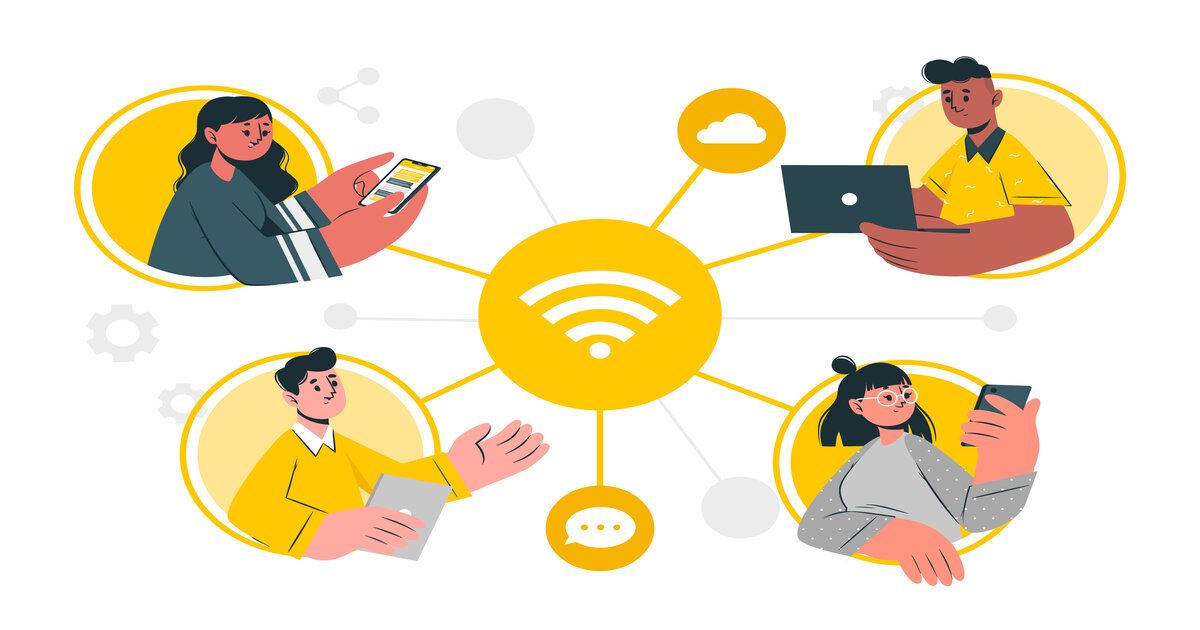To Make Better, Easier Progress, Go ‘Async’ More Often

Vector image is from freepik.com by storyset.
How we work continues to evolve from remote and hybrid work to even more flexible arrangements.
But that doesn’t mean we should expect that slower progress or worse outcomes will be the result.
Many businesses are discovering in these times of changing work, that old ways of doing things have to keep being reviewed and reconsidered. They’re learning there could be a newer way of completing a task, collaborating or communicating that’s easier, causes less stress and reduces rework, or the more wasteful, overwork.
This is certainly the situation with asynchronous work.
Many teams and businesses default to predominantly synchronous work - where they have people come together to do work at the same time. Think of meetings, catch ups, interviews and workshops. Either in person or online, it’s where people gather in sync, at the same time.
While there are important benefits to synchronous work, like connection, communication and conversation – it’s not perfect and can be an extremely wasteful use of our time.
As remote work continues to be in favour for many employees – and a growing number of employers – getting everyone together at the same time, live, in sync on an online call or in a meeting room, is a contributing factor to waste, distraction, stress and burnout.
Are meetings really that bad?
You might not think the workplace meeting deserves such negative talk. But who hasn’t been in a meeting that feels like it should have been an email? There’s a reason why that’s a popular meme on social media. Or perhaps you’ve sat in a meeting in ‘listen-only’ mode, not contributing anything. Other meetings take up time by being grandstanding debates between only a couple of voices that do little to make decisions or advance the work that really matters.
If we look at our calendar for the day and see barely a break between back-to-back meetings, we know we’ve been defaulting to synchronous work. At the end of the day, you can wonder how you’ll achieve your ‘real work’, the work you’re employed for, the outcomes and results you’re contracted to achieve … particularly if you’ve spent the day in meetings.
Of course, not every meeting is wasteful; but we’ve all been in meetings that are slow, boring and time wasting, and we can wonder if there’s a better way.
Passive Observation or Active Participation
Check your level of participation to determine if there’s an opportunity for a better way.
Scan the room or the online meeting. How many people are there? And how long is the meeting going for? When you do these simple calculations, you begin to realize how expensive meetings can be. The meeting could be of 8 people, for 2 hours. That’s the equivalent of two days’ work. Or say, 14 people, for an hour. That’s equivalent of another day.
Having a meeting might seem like a good idea initially, but so much time in meetings is down-time, wasted with what I call passive observation mode. Sitting. Listening. Watching.
Meetings of higher value instead aim to involve people via active participation mode; they’re doing something valuable, contributing, conversing, resolving, deciding, synthesising and advancing the work.
If it’s a passive observation mode kind of meeting – like an announcement or presentation, people can catch up on this kind of work at another time by :
- watching a recording/video
- listening to an audio
- reading the presentation document or
- reviewing and reading/scanning through a meeting transcript.
There are plenty of other ways of receiving information than having to be there live when it’s first shared, delivered or presented.
This is one of the key reasons why meetings are becoming the primary target for reform and change in forward thinking workplaces. Employers are keen to release blocks of dead and unproductive time from people’s schedules and help them reclaim some power and autonomy over their day.
Poorly led meetings are potentially the greatest waste of synchronous work effort in the workplace today.
Time to combat the waste
Teams making successful changes to more asynchronous ways of working have introduced meeting free blocks of time during the week, like meeting free days. The results from research on ‘The Surprising Impact of Meeting-Free Days’, in MIT Sloan Management Review showed that 75 companies who introduced between 1 and 5 meeting-free days a week, gained improvements in communication, engagement, satisfaction and autonomy. And problems like micromanagement and stress reduced.
Deleting meetings doesn’t make things worse; it makes things better.
So what do you do instead of meeting, synchronously?
In the place of those dull meetings, people are collaborating, contributing and participating more and better via asynchronous tools. These include things like:
- Task boards
- Shared documents
- Online visual collaboration platforms like Jamboard, Mural and Miro
- Email and messaging
- Voice, video and visual tools.
Asynchronous work is allowing people to work on tasks and projects at times and in ways that suit them best - which means employers are getting the best out of their people, at times and in ways that work for the individual.
Read more: The Future of Work
Additionally, our asynchronous contributions usually take less time than being in a long meeting, and the work can be done at times and in ways that suit us best. For example, we might group or ‘batch’ similar task types like creativity and contributing ideas, or reading and commenting, or voting and prioritising.
The increasing shift to more asynchronous work means we don’t have to try as hard as we do to ‘find a time’ that everyone can meet and we don’t have to wait until ‘everyone’s available’. This is particularly the case when people might be on leave, working on other priorities or simply can’t be in two places or two meetings at once. The sight of a leader wearing two sets of headphones trying to be in two meetings at once was real; they were on one online meeting, listening… and trying to be in another meeting at the same time, on a different device.
Enough!
We’ve got to change our thinking and beliefs that we have to get everyone sitting in on the same meeting; it’s just not a sensible way to work when so many people are drowning in workloads and struggling to take breaks, achieve results and complete key tasks of their role.
Making a more deliberate switch
Here’s what to look out for to make a more deliberate switch to async work:
- Notice your default. Notice when you default to thinking you need to call a meeting. Do you say, ‘let’s connect on this’ or ‘can I grab you for a minute’ or ‘let’s get everyone together’. We may do this without even thinking so it’s a sign your first thought is ‘we have to meet’. But we don’t always have to.
- Outcome first. What is the meeting for? Consider how else you can achieve that outcome without everyone meeting sync. If it’s to make a decision, why not send the deciding parties an email with a ‘yes/no/maybe/not yet’ checklist for them to highlight or tick off.
- Hunt and gather. Gather contributions and inputs from people in other ways. Don’t wait for a meeting to be held if you need to get people’s ideas. You can still get ideas via a shared document link, a survey, a brief email with a request or a short video or audio message explaining what you need. And they’ll be better ideas than when people are put on the spot.
- High value experiences only. When you do meet, ensure it’s a high value high outcome meeting. The opposite are the low value low outcome meetings, which are the time-wasting sync experiences people are tired of, don’t have time for and they’re more likely to decline the invite to the meeting in the first place.
- More choices, all types. Provide more choices for people to participate and contribute beyond just attending a meeting. As greater and more inclusive experiences filter through to all sectors and industries, every workplace needs to consider how they can make participating and contributing at work easier and more inclusive for everyone.
When you provide more opportunities for asynchronous work, you’ll find that support begins to grow rapidly for this way of working. Opportunities to provide ideas expand and people contribute in ways they may have missed out on previously.
Resist these changing ways of work at your peril or you could be hosting a meeting of one! New ways of leading, working and achieving are continuing to evolve and we need to keep adapting the way we do things. It’s the main way we will keep ahead of the pressures of change and be sure we keep the best talent on our team.
Leaderonomics.com is an advertisement free website. Your continuous support and trust in us allows us to curate, deliver and upkeep the maintenance of our website. When you support us, you allow millions to continue reading for free on our website. Will you give today? Click here to support us.
Functional
Tags: Systems & Structures, Building Functional Competencies, Business Meetings, Organisational Challenges, Team Leadership, Business Management, Communication
Lynne Cazaly is a work futurist and an expert in new ways of working. She is an international keynote speaker and award-winning author with her ideas and thoughts published in 10 books.
Read more at www.lynnecazaly.com





